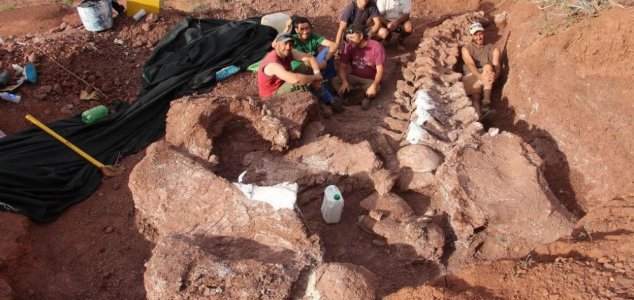
Paleontologists in Argentina are in the process of unearthing a gargantuan, record-breaking dinosaur.
The enormous sauropod, which was discovered in the central region of Neuquen Province, is thought to be up to 20 percent larger than Patagotitan mayorum – a 40-meter, 70-ton behemoth that many archaeologists believe to be the largest land animal ever to walk the face of the Earth.

“What has been found so far are the first 24 vertebrae of the tail, elements of the pelvic girdle, the pectoral girdle and more remains continue under the rock, so we will continue with their rescue in future field works,” said Dr. Alejandro Otero – a researcher from the Vertebrate Paleontology Division of the Museo de La Plata and lead author of the first communication on the specimen.
“Regarding size, very accurate estimates of body mass could not be made, because we do not yet have long bones such as the humerus or femur, which are the bones traditionally used to make these estimates.”

“But, having made some comparisons with Patagotitan mayorum – the largest dinosaur known so far – for example with vertebrae and other elements of the girdles, it gives us that the bones of this new animal are between 10 and 20 percent larger than Patagotitan.”
The fossil remains of this new dinosaur were first spotted by Dr. Jose Luis Carballido.

“The truth is that, as you can see in the photos, the specimen is terrific, because it is practically articulated and we have more than half of the tail, many hip bones and, evidently, there are still more bones into the rock, so we are going to have a few more years of excavations,” he said.
“We found it in 2012, but it was not until 2015 that we started the excavation work, because we were also working on the extraction of other materials in other sites.”

Given the potential for this specimen to be the largest known dinosaur to ever exist, this is one excavation that the palaeontological community will be watching with keen interest.